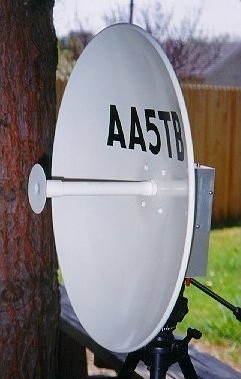
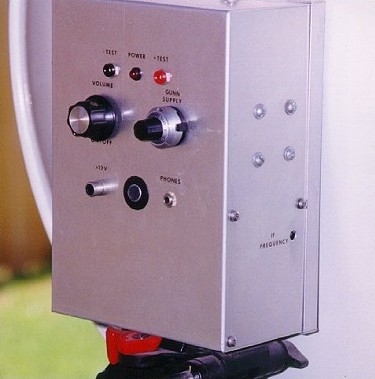


Above are photos of the front and back of my 10 GHz wideband FM transceiver that I built many years ago but I still use on occasion. It is a full duplex FM system and is a pleasure to operate.
A Gunn diode oscillator is used for both the transmitter and the receiver 1st local oscillator. It was removed from an automatic door opener similar to the ones you see above the doors at super markets. Power output is roughly 10 mW. DC power for the oscillator is supplied via an adjustable voltage regulator in which audio is applied to the adjust pin to effect modulation. When the voltage supplied to the Gunn diode shifted the oscillating frequency is shifted as well. This allows for a course frequency adjustment via an external potentiometer and for frequency modulation (some residual amplitude modulation). RF output is coupled from the Gunn diode's waveguide to semi-rigid coax, then to the circular waveguide. The circular waveguide is made from standard 3/4" copper water pipe. At the end of the circular guide a modified CPVC coupler is used simply to secure the splash plate at the correct distance from the open ended circular waveguide. The dimple in the center of the splash plate is to help reduce the amplitude of energy reflected back into the waveguide (reduce VSWR). I know this isn't a perfect sub-reflector but it works pretty good.
On receive the RF is mixed with the 1st LO from the Gunn diode in a mixer diode that is installed in the waveguide coming from the Gunn diode's cavity. The IF output is amplified with a homebrew amplifier then it is passed through a 30 MHz band pass filter. This filter IF is the applied to the front-end of a 30 MHz wideband FM receiver. This receiver was a Radio Shack "Flavortone" radio that I modified for operation at 30 MHz only. You can see the IF fine adjustment on the side of the box.
The system as a whole was design for 200 KHz bandwidth operation using a maximum deviation of 75 KHz. No modulation limit (any longer) is used since once you tune to another station you can hear yourself through the headphones and easily tell if your over deviating (tip from Kent Brittain, WA5VJB). By the way, the microphone is the small black circle in the middle of the box. All one has to do is put on the headphones, tune in your station and start talking. It is quite a pleasure to operate. The range is not as good as the narrowband CW and SSB gear but the communication quality is excellent!

The whole inside view of my 10 GHz FM Full-Duplex Transceiver.
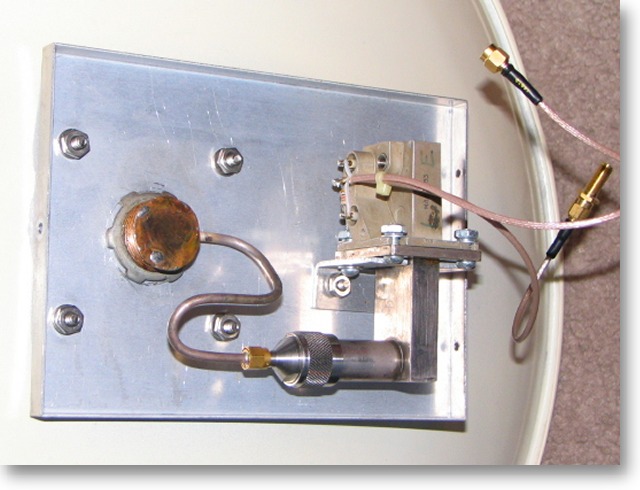
(from right to left) Gunn Diode Oscillator, Mixer, Waveguide-to-Coax adapter, Semi-rigid Feedline, and Homebrew
Coax-to-Circular Waveguide Adapter on back of dish.
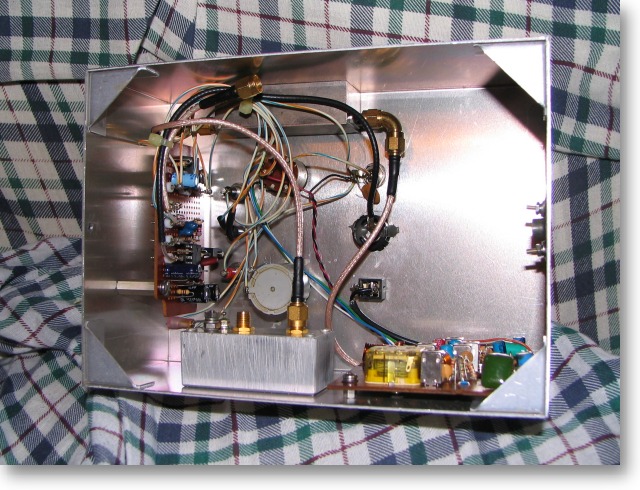
A view into the whole IF section. (left) Transmit Modulator, (top) 30 MHz IF Filter, (bottom right) Homebrew
30 MHz IF Amplifier, (right) 30 MHz IF FM Receiver.
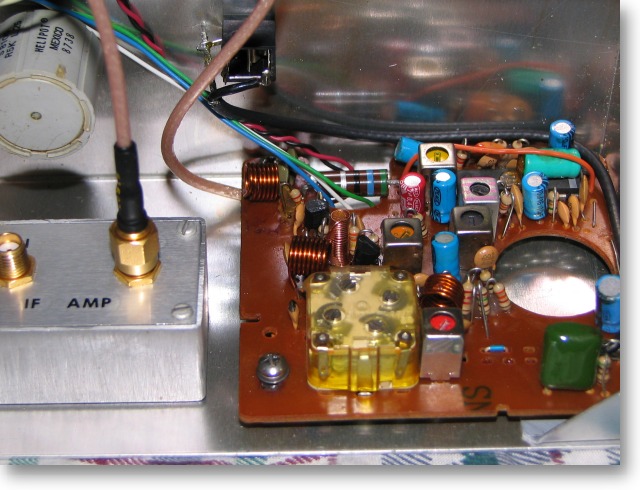
Homebrew 30 MHz IF Amplifier and 30 MHz IF Receiver (modified "Flavortone" AM/FM Receiver).
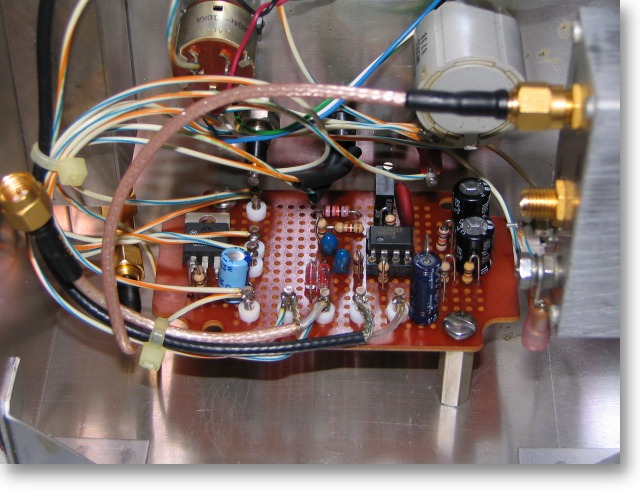
Close-up view of the Homebrew Transmit Modulator/Gunn Supply circuit.

Close-up view of the Front Panel.